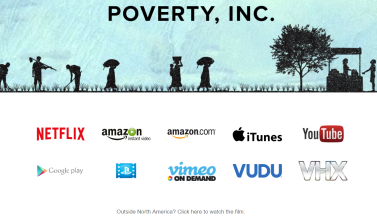I’m a little sad. Today is the last day of “My Christmas PR Wish”. It’s been fun looking at some of the books, movies and shows that portray communications professionals as scrooge-like characters.
But all good things must come to an end, or so they say. There’s food to be cooked, a house to be cleaned, gifts to be wrapped and people to celebrate with and enjoy the pleasure of their company.
Before I do all that, I want to share with you ten more Christmas movies that portray comm pros as “the new Scrooges”. All of these movies were either initially released on the big screen, or were straight-to-video or made-for-television films.
10 Christmas Movies of Communications Pros
 A Carol Christmas (2003; Hallmark Entertainment, et al.). Tori Spelling stars in this made-for-T.V., modern take on the Dickens classic A Christmas Carol. Spelling plays Carol, an self-absorbed television talk-show host in place of Dickens’ Scrooge. The ending is just like the Dickens classic, with Carol shedding her former self and finding the true meaning of Christmas. Photo courtesy of IMBd.com
A Carol Christmas (2003; Hallmark Entertainment, et al.). Tori Spelling stars in this made-for-T.V., modern take on the Dickens classic A Christmas Carol. Spelling plays Carol, an self-absorbed television talk-show host in place of Dickens’ Scrooge. The ending is just like the Dickens classic, with Carol shedding her former self and finding the true meaning of Christmas. Photo courtesy of IMBd.com
2.  A Christmas to Remember (2016; Hallmark Entertainment, et al.) Mira Sorvino and Cameron Mathison star in yet another Christmas television movie from Hallmark that features a “harsh” (Hallmarkmoviesandmysteries.com) television personality in need of an attitude adjustment. After an accident causes the main character (Sorvino) to have amnesia and she is rescued by the local town hunk, she eventually regains her memory and realizes how shallow and empty her previous life was. Of course, she makes the so-called right life decisions just in time for Christmas. If you haven’t seen this movie, no worries. Hallmark is airing it 8 more times between Dec. 21 and January 1. Check your local provider for showtimes. Photo courtesy of IMBd.com
A Christmas to Remember (2016; Hallmark Entertainment, et al.) Mira Sorvino and Cameron Mathison star in yet another Christmas television movie from Hallmark that features a “harsh” (Hallmarkmoviesandmysteries.com) television personality in need of an attitude adjustment. After an accident causes the main character (Sorvino) to have amnesia and she is rescued by the local town hunk, she eventually regains her memory and realizes how shallow and empty her previous life was. Of course, she makes the so-called right life decisions just in time for Christmas. If you haven’t seen this movie, no worries. Hallmark is airing it 8 more times between Dec. 21 and January 1. Check your local provider for showtimes. Photo courtesy of IMBd.com
3. 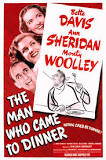 The Man Who Came to Dinner (1942; Warner Brothers, et al.) Okay, so this one’s not so new. But it has everything we’ve been talking about. A burly, surly radio personality that ends up being a con man disrupts the lives of the family that he is staying with. However, there’s one thing: he doesn’t change and the movie ends with an ironic twist. I don’t think it’s on television, but Barnes and Noble has the DVD for sale at a fairly reasonable price. Photo Courtesy of Google.
The Man Who Came to Dinner (1942; Warner Brothers, et al.) Okay, so this one’s not so new. But it has everything we’ve been talking about. A burly, surly radio personality that ends up being a con man disrupts the lives of the family that he is staying with. However, there’s one thing: he doesn’t change and the movie ends with an ironic twist. I don’t think it’s on television, but Barnes and Noble has the DVD for sale at a fairly reasonable price. Photo Courtesy of Google.
4.  White Christmas (1954; Paramount) Wait. What? I bet you’re thinking that this well-love classic musical doesn’t belong on this list of comm pros portrayed as scrooge-like characters. But hear me out.
White Christmas (1954; Paramount) Wait. What? I bet you’re thinking that this well-love classic musical doesn’t belong on this list of comm pros portrayed as scrooge-like characters. But hear me out.
The main characters, played by Bing Crosby and Danny Kaye, are entertainers who eventually become Broadway producers. Bing eventually becomes cynical . . . well, as much as Bing Crosby can be . . . arguing how everyone in show business has an angle.
Then there’s the part of the plot where Crosby’s character wants to rejoin the army, but is denied. So, Crosby and a former army buddy turned variety show host discuss airing a television show to gain free publicity for Crosby. Crosby rejects the notion, but an eavesdropping housekeeper, who only hears part of the conversation, sets off a series of unfortunate PR and personal crises. In the end, Crosby’s character’s image is redeemed and everyone sings the self-titled song that is synonymous with Crosby and Christmas.
Kind of sounds like what we’ve been talking about, doesn’t it? Whether you agree with my take or not, I bet you won’t be able to stop thinking about this the next time you watch this classic.
Photo courtesy of Google.
5.  Holiday Affair (1949, RKO). Hmm. Seems like I might have actually stumbled upon the beginnings of the portrayal of comm pros as scrooge-like characters in need of reforming in Christmas move. This is the third in a row on my list.
Holiday Affair (1949, RKO). Hmm. Seems like I might have actually stumbled upon the beginnings of the portrayal of comm pros as scrooge-like characters in need of reforming in Christmas move. This is the third in a row on my list.
In Holiday Affair, Janet Leigh stars as a war-widowed single mom who is a “comparative shopper” (can you say market researcher/mystery shopper?) who is ultimately the cause of Robert Mitchum losing his job, becoming penniless and arrested. When Leigh’s character is confronted by Mitchum’s about his love for her, she initially rejects him. In the end, the mystery shopper must admit her true feelings and run to stop Mitchum from leaving. Just in time for Christmas? Well, not exactly. Close. New Year’s. Same holiday season, though, right?
6 and 7.  and
and  Same movie; different year, different production, and different cast. A Christmas in Connecticut is all about a food writer or television personality who fools her audience into believing that she can write and/or cook and all the personal and professional trouble this ruse gets her into. It’s a PR nightmare for her publisher/broadcaster for sure. But in the end, she mends her ways and becomes a better person, just in time for Christmas. Photos courtesy of Google.
Same movie; different year, different production, and different cast. A Christmas in Connecticut is all about a food writer or television personality who fools her audience into believing that she can write and/or cook and all the personal and professional trouble this ruse gets her into. It’s a PR nightmare for her publisher/broadcaster for sure. But in the end, she mends her ways and becomes a better person, just in time for Christmas. Photos courtesy of Google.
8.  Comfort and Joy (2003; Lifetime Television). Just to show I’m not picking on Hallmark made-for-television movies for picking on comm pros, this Lifetime movie is a lot like #2 above. The main character gets amnesia, is rescued by the town hunk and lives a whole other life before she actually remembers who she used to be. Of course, she hates her old life as a greedy, materialistic, workaholic and decides that this new life is better for her. In A Christmas to Remember the main character is a television personality; in Comfort and Joy, she is the vice-president of an ad agency. Same plot, same thought that comm pros end up wanting to leave their career because it has made them bad people. Photo courtesy of Google.
Comfort and Joy (2003; Lifetime Television). Just to show I’m not picking on Hallmark made-for-television movies for picking on comm pros, this Lifetime movie is a lot like #2 above. The main character gets amnesia, is rescued by the town hunk and lives a whole other life before she actually remembers who she used to be. Of course, she hates her old life as a greedy, materialistic, workaholic and decides that this new life is better for her. In A Christmas to Remember the main character is a television personality; in Comfort and Joy, she is the vice-president of an ad agency. Same plot, same thought that comm pros end up wanting to leave their career because it has made them bad people. Photo courtesy of Google.
9.  The Santa Suit (2010; Hallmark) I haven’t seen this movie, but from Hallmark’s synopsis, it’s perfectly clear that this is more of the same comm pro in need of Christmas reform:
The Santa Suit (2010; Hallmark) I haven’t seen this movie, but from Hallmark’s synopsis, it’s perfectly clear that this is more of the same comm pro in need of Christmas reform:
“Drake Hunter, the president of Hunter Marketing, has the perfect plan to boost sales for his father’s toy company over the holiday season–hire department store Santas to promote his father’s merchandise. When the real Santa Claus turns Drake into a Santa lookalike, Drake finds himself working as a dress-up Kris Kringle to make ends meet. Stripped of power and position, Drake discovers the importance of honesty, compassion, and respect as he helps an unprivileged girl enjoy the magic of Christmas. Stars Kevin Sorbo.” – The Hallmark Channel website.
Photo courtesy of Google
And last, but not least. And certainly not the absolute last of movies portraying comm pros as “the new Scrooges”.
10. Love You Like Christmas (2016, Hallmark). Come on, Hallmark! What in the world do you have against communications pros? I actually caught this one the other night and groaned out loud. How could one entire production company/channel produce so many of the same movies? In this one a marketing executive has car trouble. No amnesia this time. Just a conscious realization that her life is lacking and she amazingly finds it in time for Christmas. Photo courtesy of Google.
Love You Like Christmas (2016, Hallmark). Come on, Hallmark! What in the world do you have against communications pros? I actually caught this one the other night and groaned out loud. How could one entire production company/channel produce so many of the same movies? In this one a marketing executive has car trouble. No amnesia this time. Just a conscious realization that her life is lacking and she amazingly finds it in time for Christmas. Photo courtesy of Google.
So, there you have it. 10 films and movies (no, they’re not the same thing) that feature communications professionals as “the new Scrooges” spanning more than 70 years. Wow! That’s a really long time!
Looking back to my first and second post in “My Christmas PR Wish” series, I really am beginning to realize why my son and his fellow students believe that comm pros are “soulless” creatures. It’s because the media, which by the way are communication pros too, portrays us that way.
And why is that true, especially during the holidays?
I can think of a number of reasons, but that will have to wait until 2017.
I’m taking a few days off from blogging, and watching or reading anything remotely related to Christmas fiction. I mean, how much more can we all take of people telling us how horrible we are at Christmas and we need to change? Ha, ha, ha. Or should I say “Ho, Ho, Ho”?
Seriously, this has been fun, but I’m ready to get back to talking about real PR and Marketing events and cases, so we can see what we’re doing right and wrong.
My only wish is, by learning from our mistakes and copying excellent examples of public relations and marketing, next year they’ll choose a new profession to cast as scrooge-like. I’d be okay with them choosing politicians. Now that’s a group of people many would love to cast as Scrooges. Just kidding (sort of).
Be sure to check back with me on December 27-29, and I’ll share some of the best PR and marketing stories of 2016.
Happy Holidays!
Thanks to all my followers! May you and your family and friends have a wonderful, peaceful and joyous holiday time.







![internet_projected [Converted]](https://prdoctorit.files.wordpress.com/2017/01/broadband-map_.jpg?w=401&h=261)
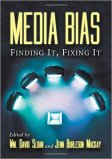 Media Bias: Finding It, Fixing It (2007; McFarland & Company) by Wm. David Sloan and Jenn Burleson Mackay
Media Bias: Finding It, Fixing It (2007; McFarland & Company) by Wm. David Sloan and Jenn Burleson Mackay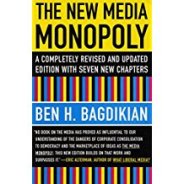 The New Media Monopoly (2004; Beacon Press) by Ben H. Bagdikian
The New Media Monopoly (2004; Beacon Press) by Ben H. Bagdikian
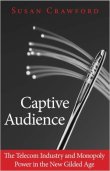


 A Carol Christmas (2003; Hallmark Entertainment, et al.). Tori Spelling stars in this made-for-T.V., modern take on the Dickens classic A Christmas Carol. Spelling plays Carol, an self-absorbed television talk-show host in place of Dickens’ Scrooge. The ending is just like the Dickens classic, with Carol shedding her former self and finding the true meaning of Christmas. Photo courtesy of IMBd.com
A Carol Christmas (2003; Hallmark Entertainment, et al.). Tori Spelling stars in this made-for-T.V., modern take on the Dickens classic A Christmas Carol. Spelling plays Carol, an self-absorbed television talk-show host in place of Dickens’ Scrooge. The ending is just like the Dickens classic, with Carol shedding her former self and finding the true meaning of Christmas. Photo courtesy of IMBd.com A Christmas to Remember (2016; Hallmark Entertainment, et al.) Mira Sorvino and Cameron Mathison star in yet another Christmas television movie from Hallmark that features a “harsh” (Hallmarkmoviesandmysteries.com) television personality in need of an attitude adjustment. After an accident causes the main character (Sorvino) to have amnesia and she is rescued by the local town hunk, she eventually regains her memory and realizes how shallow and empty her previous life was. Of course, she makes the so-called right life decisions just in time for Christmas. If you haven’t seen this movie, no worries. Hallmark is airing it 8 more times between Dec. 21 and January 1. Check your local provider for showtimes. Photo courtesy of IMBd.com
A Christmas to Remember (2016; Hallmark Entertainment, et al.) Mira Sorvino and Cameron Mathison star in yet another Christmas television movie from Hallmark that features a “harsh” (Hallmarkmoviesandmysteries.com) television personality in need of an attitude adjustment. After an accident causes the main character (Sorvino) to have amnesia and she is rescued by the local town hunk, she eventually regains her memory and realizes how shallow and empty her previous life was. Of course, she makes the so-called right life decisions just in time for Christmas. If you haven’t seen this movie, no worries. Hallmark is airing it 8 more times between Dec. 21 and January 1. Check your local provider for showtimes. Photo courtesy of IMBd.com The Man Who Came to Dinner (1942; Warner Brothers, et al.) Okay, so this one’s not so new. But it has everything we’ve been talking about. A burly, surly radio personality that ends up being a con man disrupts the lives of the family that he is staying with. However, there’s one thing: he doesn’t change and the movie ends with an ironic twist. I don’t think it’s on television, but
The Man Who Came to Dinner (1942; Warner Brothers, et al.) Okay, so this one’s not so new. But it has everything we’ve been talking about. A burly, surly radio personality that ends up being a con man disrupts the lives of the family that he is staying with. However, there’s one thing: he doesn’t change and the movie ends with an ironic twist. I don’t think it’s on television, but  White Christmas (1954; Paramount) Wait. What? I bet you’re thinking that this well-love classic musical doesn’t belong on this list of comm pros portrayed as scrooge-like characters. But hear me out.
White Christmas (1954; Paramount) Wait. What? I bet you’re thinking that this well-love classic musical doesn’t belong on this list of comm pros portrayed as scrooge-like characters. But hear me out. Holiday Affair (1949, RKO). Hmm. Seems like I might have actually stumbled upon the beginnings of the portrayal of comm pros as scrooge-like characters in need of reforming in Christmas move. This is the third in a row on my list.
Holiday Affair (1949, RKO). Hmm. Seems like I might have actually stumbled upon the beginnings of the portrayal of comm pros as scrooge-like characters in need of reforming in Christmas move. This is the third in a row on my list. and
and  Same movie; different year, different production, and different cast. A Christmas in Connecticut is all about a food writer or television personality who fools her audience into believing that she can write and/or cook and all the personal and professional trouble this ruse gets her into. It’s a PR nightmare for her publisher/broadcaster for sure. But in the end, she mends her ways and becomes a better person, just in time for Christmas. Photos courtesy of Google.
Same movie; different year, different production, and different cast. A Christmas in Connecticut is all about a food writer or television personality who fools her audience into believing that she can write and/or cook and all the personal and professional trouble this ruse gets her into. It’s a PR nightmare for her publisher/broadcaster for sure. But in the end, she mends her ways and becomes a better person, just in time for Christmas. Photos courtesy of Google.  Comfort and Joy (2003; Lifetime Television). Just to show I’m not picking on Hallmark made-for-television movies for picking on comm pros, this Lifetime movie is a lot like #2 above. The main character gets amnesia, is rescued by the town hunk and lives a whole other life before she actually remembers who she used to be. Of course, she hates her old life as a greedy, materialistic, workaholic and decides that this new life is better for her. In A Christmas to Remember the main character is a television personality; in Comfort and Joy, she is the vice-president of an ad agency. Same plot, same thought that comm pros end up wanting to leave their career because it has made them bad people. Photo courtesy of Google.
Comfort and Joy (2003; Lifetime Television). Just to show I’m not picking on Hallmark made-for-television movies for picking on comm pros, this Lifetime movie is a lot like #2 above. The main character gets amnesia, is rescued by the town hunk and lives a whole other life before she actually remembers who she used to be. Of course, she hates her old life as a greedy, materialistic, workaholic and decides that this new life is better for her. In A Christmas to Remember the main character is a television personality; in Comfort and Joy, she is the vice-president of an ad agency. Same plot, same thought that comm pros end up wanting to leave their career because it has made them bad people. Photo courtesy of Google. The Santa Suit (2010; Hallmark) I haven’t seen this movie, but from Hallmark’s synopsis, it’s perfectly clear that this is more of the same comm pro in need of Christmas reform:
The Santa Suit (2010; Hallmark) I haven’t seen this movie, but from Hallmark’s synopsis, it’s perfectly clear that this is more of the same comm pro in need of Christmas reform: Love You Like Christmas (2016, Hallmark). Come on, Hallmark! What in the world do you have against communications pros? I actually caught this one the other night and groaned out loud. How could one entire production company/channel produce so many of the same movies? In this one a marketing executive has car trouble. No amnesia this time. Just a conscious realization that her life is lacking and she amazingly finds it in time for Christmas. Photo courtesy of Google.
Love You Like Christmas (2016, Hallmark). Come on, Hallmark! What in the world do you have against communications pros? I actually caught this one the other night and groaned out loud. How could one entire production company/channel produce so many of the same movies? In this one a marketing executive has car trouble. No amnesia this time. Just a conscious realization that her life is lacking and she amazingly finds it in time for Christmas. Photo courtesy of Google.
